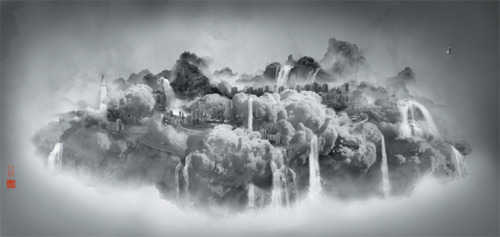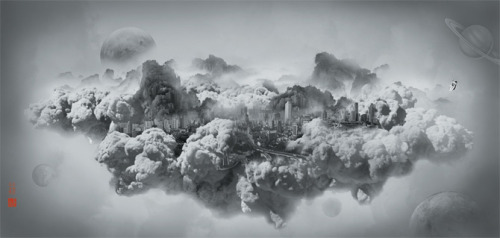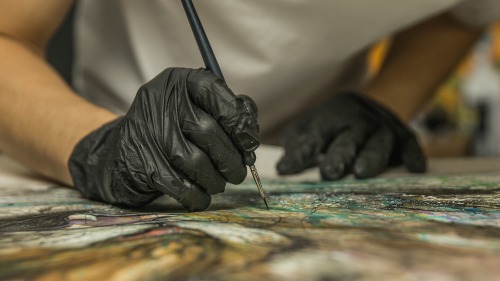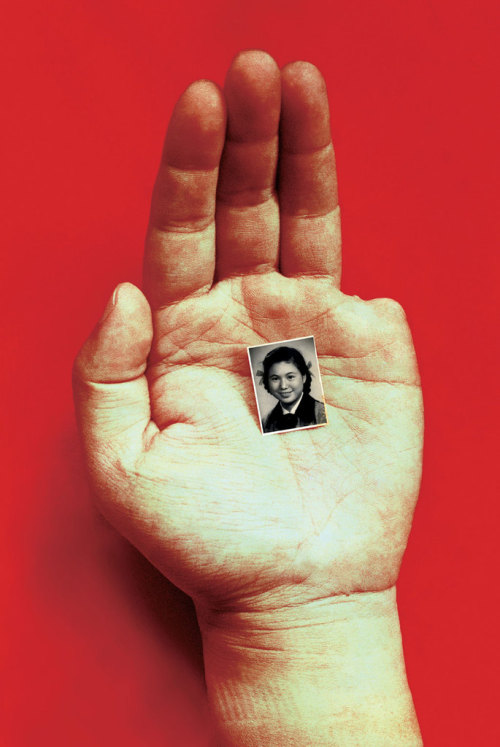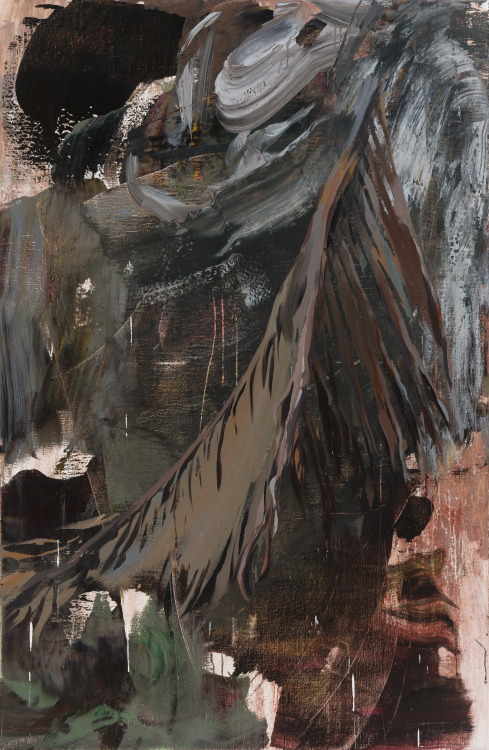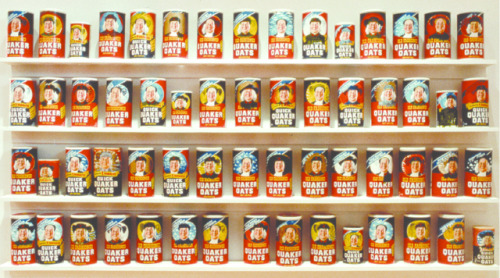#chinese contemporary art
From artchipel:
Yang Yongliang: On the quiet water / Heavenly city series, 2008
Yang Yongliang (born 1980) is a photographer and painter from Shanghai. In this series he uses digital manipulations to inverse the imagery of Song dynasty painters hereby creating works that are themselves visually attractive. His cold, hard urban images possess a layer of romantic beauty with their mists and towering forms. By making his works “beautiful” he has managed to make them much more than a mockery of modern life. Instead they subtly pose the difficult question of whether urban life can be simultaneously loathsome and possess an intrinsic beauty.
Yang carefully made these riffs on Southern Song landscapes because these works have long been regarded in China as a sublime expression of nature’s beauty and mystery. Are Yang’s images meant to be taken as expressions of a city’s beauty or of the terror of urban encroachment.
More on Yang Yongliang here
Post link
《卧虎 Crouching Tiger》
The spirits of the earth
2014纸本水墨 -Ink on paper-
110cm*75.4cmHUA TUNAN/畫圖男
Post link
Sheng Qi
My Mother, 2007I found this photo over at the great Journal De La Photographie. Definitely worth a browse.
Post link
Cuban Sugar. Li Songsong (李松松). Oil on aluminum panels. 2006.
Li Songsong, born in 1973, is a painter from Beijing. He received his Bachelor of Fine Arts degree from the Central Academy of Fine Arts, and was among the first to establish a studio in the 798 Arts District in Beijing. Though many of Li’s works depict political or historical events, they do not take any position and thus Li does not consider himself a political artist.
Cuban Sugar refers to China’s sugar production crisis, which forced the nation to engage in trade with Cuba. Li’s presentation of the photograph appears fragmented and torn apart, a feature present in many of his works.
Follow sinθ magazine for more daily posts about Sino arts and culture.
Post link
Quaker Oats Mao. Zhang Hongtu (张宏图). 1987.
Zhang Hongtu (张宏图) is a Chinese artist who graduated from the Central Academy of Fine Arts. In his art, Zhang often combines eastern and western ideas, styles, and techniques in his art. Zhang left China for the United States in the early 1980s and currently resides in New York.
InQuaker Oats Mao, Zhang criticizes the ubiquity and power of Chairman Mao Zedong’s image in China by imposing iconic features of Mao, such as hair and clothing, onto the Quaker Oats man. This pop art of Zhang’s was not well received by neither China, where Mao’s image was almost sacred, nor the Quaker Oats company, which was anti-Communist.
Follow sinθ magazine for more daily posts about Sino arts and culture.
Post link
Litchi Girl (荔枝姑娘). Mao Chenyu (毛晨雨). Multi-media. 2018.
Mao Chenyu is an artist, documentary filmmaker, researcher and rice farmer born in Hunan and based in Shanghai, China. Trained in the study of inorganic non-metallic materials, Mao founds and runs Paddy Film Farm, a grassroots independent film studio and producer of organic rice and strong liquor. As such, he has spent over a decade producing “ethnographically inflected documentary work” in a village outside of Yueyang in Hunan. Mao has participated in multiple solo exhibitions and group exhibitions since 2015, and their films have won awards in the Yamagata International Documentary Film Festival and Yunnan Multiculture Visual Festival.
Litchi Girl is Mao’s first solo exhibition and concerns the “contradictions between white and black spaces”. Mao uses green to resist both white and black discourses, mimicking the green screen technique of cinematic production. Viewers of the exhibition are left searching for the absent Litchi Girl throughout the exhibition, as the only footnote appears in the video Memory that Self Vanishes with 2/3 Speed of Light, which mentions that “In 1967 ‘Litchi Girl’ escaped a labor camp guarded by men, and jumped into the river. Several days later her body was found at the river mouth near Dongting Lake, her breasts already swollen”.
Follow sinθ magazine for more daily posts about Sino arts and culture.
Post link


